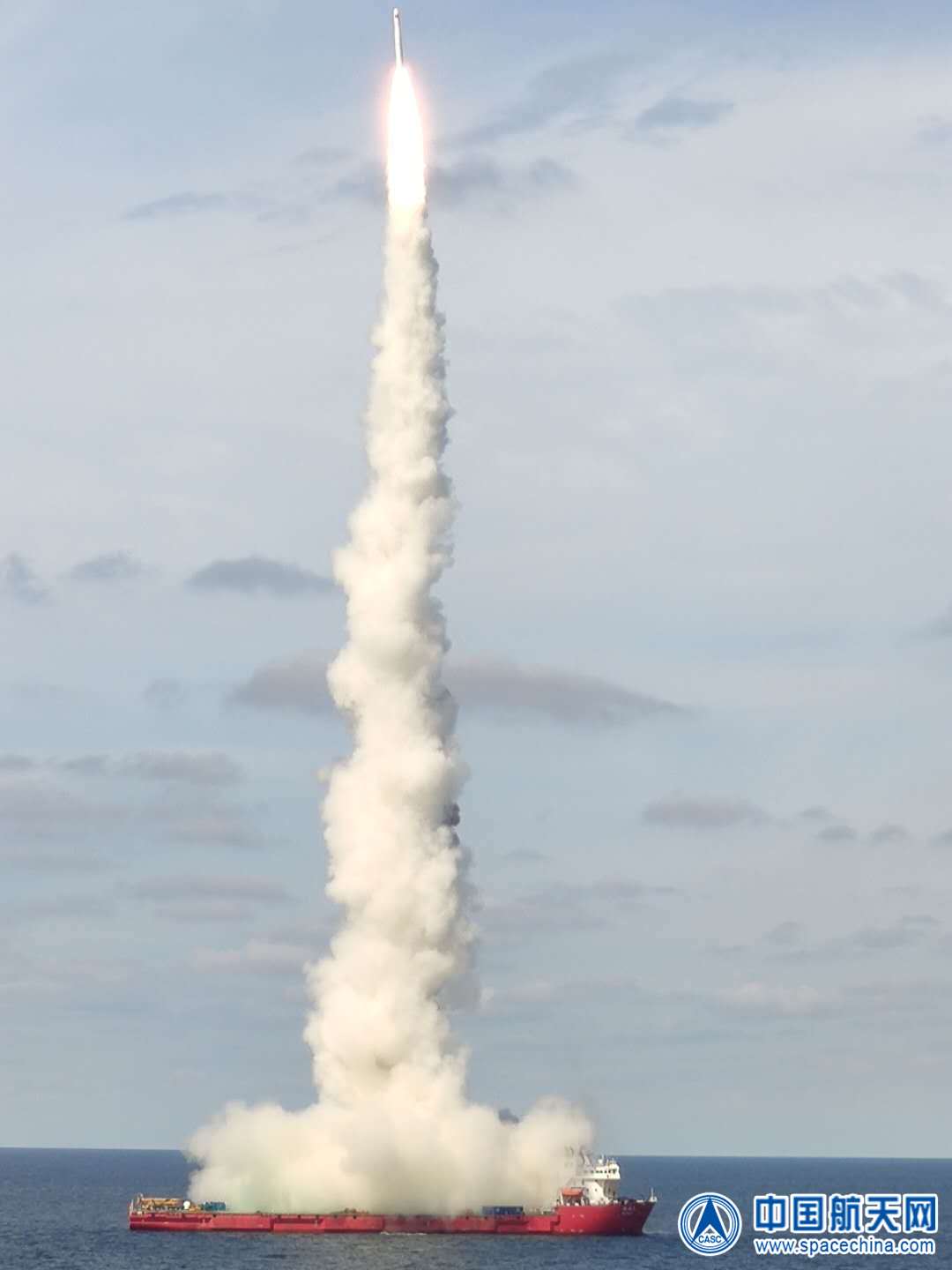China launches 9 satellites into space from ocean platform
It's the country's second sea launch success.
China launched a Long March 11 rocket from an ocean platform in the Yellow Sea early Tuesday (Sept. 15), successfully sending nine satellites into orbit.
The launch took place at 09:23 local time (01:23 GMT/9:23 p.m. Eastern Monday) from a 524-feet-long (159.6 meters) launch platform named De Bo 3.
The mission is China's second ocean-based launch, following a first Long March 11 sea launch in June 2019. It is the first time however that China has used new seaport facilities at Haiyang in eastern China. China is only the third country to perform a sea launch, following the U.S. and Russia.
Related: The latest news about China's space program


Nine Jilin-1 Gaofen-03 (High Resolution-03) Earth observation satellites were put into roughly 332-mile (535 kilometers) orbits and will provide data for land resource survey, urban planning, disaster monitoring and other uses.
The satellites belong to Chang Guang Satellite Technology Co., Ltd., (CGST) a commercial spinoff from the Changchun Institute of Optics, Fine Mechanics and Physics (CIOMP), which belongs to the Chinese Academy of Sciences.
Six of the satellites are push-broom imaging satellites, capable of returning images showing features as small as 3 feet (nearly 1 1 meter). The last three are video imaging satellites. The Chinese video sharing platform Bilibili and state broadcaster CCTV each have one satellite named for them through sponsorships, with popular science stated as one of the uses.
Get the Space.com Newsletter
Breaking space news, the latest updates on rocket launches, skywatching events and more!
CGST is building a constellation of 138 commercial Earth observation satellites, capable of imaging any spot on Earth five to seven times a day.

The mission is being reported as a breakthrough in China. "This sea launch marks an important step we took in building a sea-based launch system," Li Zongli, director of the Taiyuan Satellite Launch Center, told state media.
"The building of sea launch platforms will expand China's spacecraft launch areas, improve the launch efficiency, and make our spacecraft launch more flexible and safer."
China established a spaceport in Haiyang City, Shandong Province to facilitate not only for preparing rocket launches but also as an entire space industrial cluster. The hub, which is still under development, will include space research and manufacturing, SpaceNews reported.

"Once completed, it will be able to produce 20 solid propellant launch vehicles per year. Our plan is that, by the end of next year, the entire starting area will be fully functional," Gao Zhongqian, deputy mayor of Haiyang, told CCTV. Eventually the site will be able to also produce liquid propellant rockets.
The Haiyang seaport adds to China's four space launch centers, with three situated deep inland and another on the coast. Inland launches see spent stages fall to ground, and sometimes threaten inhabited areas — most recently a school in Shaanxi province. Sea launches could reduce such risks.
The 9 satellites add to at least 16 Jilin-1 satellites already sent into orbit. Another Jilin-1 satellite, designated Gaofen-02C, was lost in the launch failure of a Kuaizhou-1A rocket on Saturday.
China has carried out 27 launches in 2020 so far, including its Tianwen-1 Mars mission, but has suffered four failures.
Follow us on Twitter @Spacedotcom and on Facebook.
Join our Space Forums to keep talking space on the latest missions, night sky and more! And if you have a news tip, correction or comment, let us know at: community@space.com.

Andrew is a freelance space journalist with a focus on reporting on China's rapidly growing space sector. He began writing for Space.com in 2019 and writes for SpaceNews, IEEE Spectrum, National Geographic, Sky & Telescope, New Scientist and others. Andrew first caught the space bug when, as a youngster, he saw Voyager images of other worlds in our solar system for the first time. Away from space, Andrew enjoys trail running in the forests of Finland. You can follow him on Twitter @AJ_FI.









